FEATURE
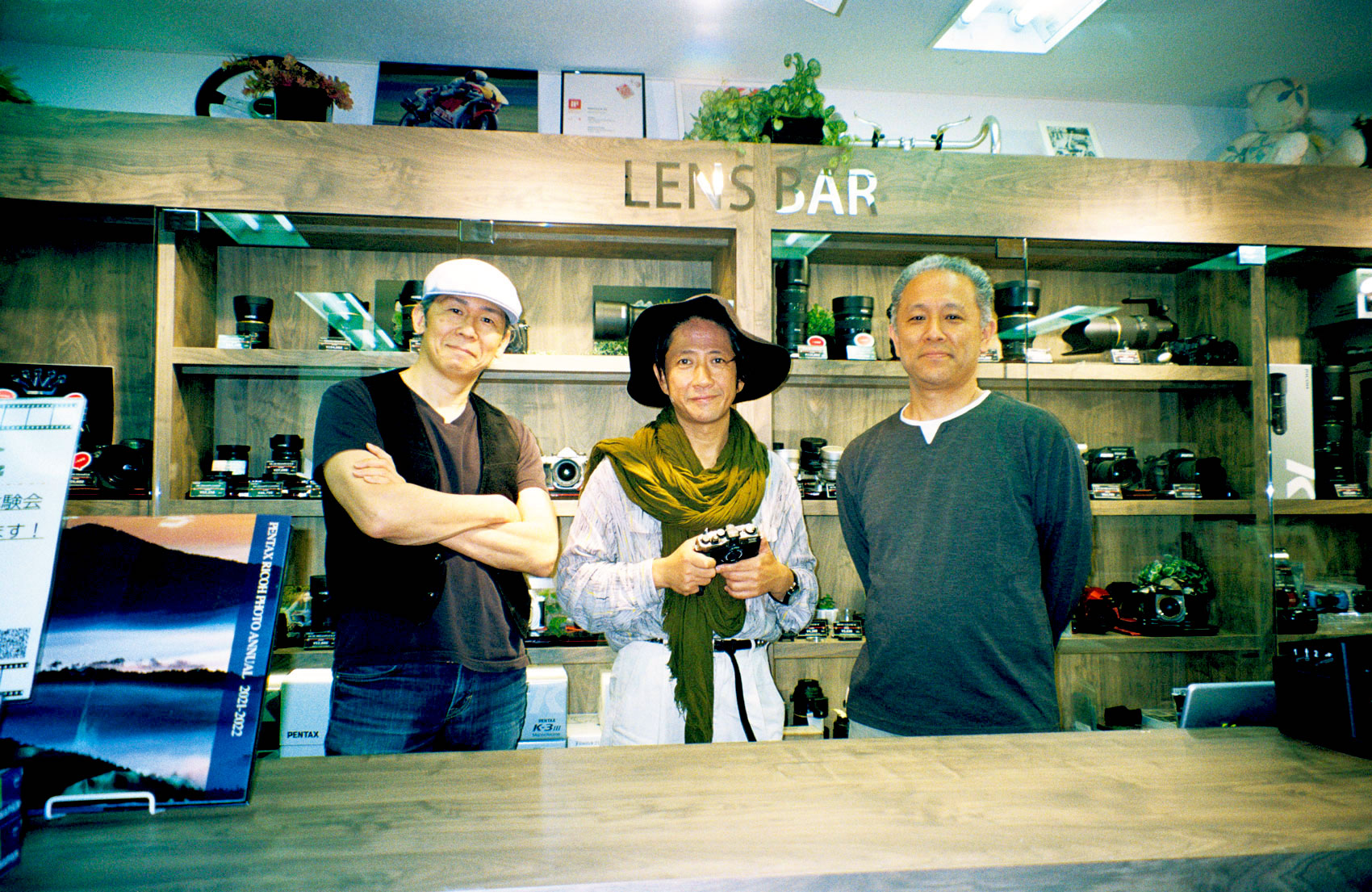
Short series PENTAX Film Project Club House Diary vol.9 Guest: KEISUKE NAGOSHI
JUL. 19 2024, 12:00PM
Photographs and text / Melanie Tada
Nagoshi: When I was invited as a guest for the first time along with Mr. Yasushi Nishimura, who runs Prism Lab KICHIJOJI, I remember talking about whether it would be possible to decipher the old blueprints. About a year and a half has passed since then, and I’m amazed that the finished product exists here in front of my eyes. I offer my sincere congratulations!
Iikawa: Thank you. We are pleased to finally be able to report back to you. Please feel free to try it out for yourself.
Nagoshi: It’s a cool visual that you don’t see very often. The “17” logo also works well.
Suzuki: The name “PENTAX 17” is derived from the half-size format of the 17×24mm, which is approximately half the size of 35 mm film(36x24mm). We hope that people will refer to it as the “Ichinana,”(meaning 1 and 7 in Japanese) like they do with the PENTAX 67 (also known as the “Rokunana,” or “6 and 7” in Japanese), which is a favorite of many photographers. Maybe it was partly because we wanted to use this logo (laughs), but the name was decided very early on.
Nagoshi: I see. It has a cute ring to it and I’m sure it will help establish a new “Ichinana” genre. Are the lenses interchangeable?
Suzuki: The camera will have an integrated lens. When you look through the viewfinder, you will see icons of people, flowers, and so on at the bottom, and this is a zone focus system that selects the focusing distance according to the subject. Essentially, the camera takes care of the exposure and shutter speed, and you must measure the distance by yourself. For example, in the case of macro photography, if you have the accompanying strap stretched out with a pin in the direction you want to shoot, the distance is exactly 25 cm.
Nagoshi: That’s amazing, there’s even a proper meaning to the strap. I think this is very convenient for those who are not accustomed to this, as they may not know how to measure the distance visually and may feel somewhat anxious about it.
Iikawa: So the optics are a tribute to the “PENTAX Espio Mini,” which was released in 1994. This camera is made up of three lenses, newly designed for this half-size format. It was a challenge to see what kind of camera we could make using existing glass materials (optical glass) and processing technology, and the lens designers put a lot of effort into this area. We tried various lens types other than the three-lens configuration, and after many simulations, we finally settled on the simplest one. Rather than focusing on a resolution-oriented rendering with firm edges, the rendering is fluffy with a rounded point image, leaving a little aberration. Although we could have designed it to look a bit more luxurious and presentable, we deliberately chose not to do so this time around. In fact, although an F2.8 aperture would be more pleasing to the eye, the lens was set to F3.5. From a design standpoint, it may seem like a really mysterious camera (laughs). In most cases, the latest technology of the time is incorporated into the product design, so, for example, a manual winding mechanism is not adopted, and in today’s world, there is also the option of introducing the latest technology in digital cameras. However, this time, we listened to a lot of direct feedback from young users and people who want to use film cameras in the future, and we selected and incorporated them one by one, so we did not place emphasis on the specifications. We have thoroughly pursued the enjoyment when using the camera.
Suzuki: The manual winding mechanism is also derived from the old SLR camera blueprints, and is quite faithfully used as the base of the design. We were also very particular about the sound when winding up the camera. When we first assembled it, it sounded a little noisier, but when I said to the engineer in charge, “The old cameras were a little quieter, weren’t they?” he grinned and said, “Yes, we can do that. We’re studying it now” (laughs). Ultimately, it evolved into a much smaller sound.
Nagoshi: Certainly, sound is an important part of the process that can also determine if the film is jammed inside, but it is pleasant to hear a light sound in the flow of motion. The mix of tradition and current technology is fantastic. Are there any particular scenes that it shoots well in?
Iikawa: I think it captures a pretty beautiful atmosphere at night and in the morning mist. I personally like it because it softens the light of the morning mist into the slightly grainy look when shooting with a half-frame camera. If you use the low-speed sync mode, you can shoot while leaving everything almost entirely up to the camera.
Nagoshi: The sense of urgency in shooting in low-speed synchro mode also seems to be a positive thing. Furthermore, aren’t digital cameras surprisingly vulnerable to long exposures? I tried it once and the images became choppy with noise.
Iikawa: With a film camera, it prevents this kind of noise from generating. If you have an electronic release cable set up in the rear jack and set up a tripod in the normal position, you can even shoot fireworks in the vertical composition.
BARFOUT!: So it’s perfect for the summer. This time, we handed the prototype to four photographers, including Mr. Nagoshi, and asked them to take sample photographs (see the second half). What kind of pictures would you like to take at this particular point in time?
Nagoshi: After listening to you guys, I wanted to try to capture the light at the moment when it gradually gets brighter from night to morning. Snapshots look fun too. By the way, I went to the Sahara Desert the other day for a photo shoot, but can the 17 also handle fine sand (laughs)?
Suzuki: I think that’s still difficult for now (laughs). We are very interested in what kind of pictures photographers take when they use the 17 on a daily basis.
Nagoshi: The 17 is comfortable to hold and easy to operate, which gives the impression that anyone can easily take pictures with it, in a positive sense. This was already done before, but it would be interesting to give a camera to a refugee child, for example, and from there it could be passed on to many different people. Each person can capture one shot, and with 36 sheets of film, 72 photos can be taken.
Iikawa: That would be great. I think each shot would have its own distinct flavor.
Nagoshi: There might be a master photographer among them (laughs). Exchanging data after shooting is fine, but I think that printing is the fun part of film and where it all comes together, so I hope everyone enjoys that part of the process. The feeling of having a photograph you have taken in the palm of your hand, the serenity of it, is really wonderful, isn’t it?
Suzuki: Yes, and if we can help spread the world of analog even a little from here, we can move on to the development of the next model. The reason we included the manual winding mechanism to this camera is because we wanted young users to enjoy it, and also because we felt that it was necessary for us to have the skills to make such manual winding cameras ourselves. If the engineers can master the manual winding technology, they can develop it to the next level. Although developing a film camera for the first time in 21 years was much more difficult than we had imagined, we were able to enjoy the process with the help of many people. Now that we finally have one answer, we would like to expand on it from here.
Shooting with the PENTAX 17
(1)
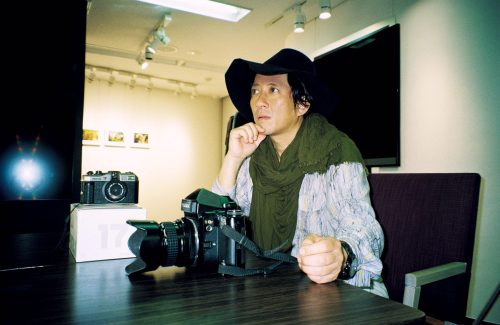
(2)
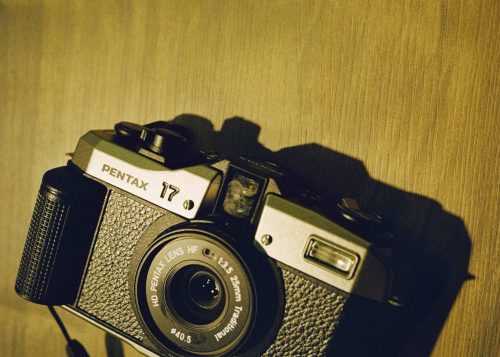
(3)

(1) The PENTAX 17 not only incorporates the traditional technologies inherited from the past, but is also full of details that pay tribute to the famous models of the past. For example, the design of the decorative box pays homage to the box design of the PENTAX 67, which Mr. Nagoshi also loves to use, when it was first introduced to the market.
(2) The minus screws located on the front and rear faces of the camera are a particular detail that Mr. Suzuki is very particular about. “These screws are used in watches and musical instruments, and I thought they would be more resistant to dirt than Phillips head screws, and above all, they would express the beauty of a camera, which is a precision instrument.” The silver part is made of magnesium alloy for greater rigidity.
(3) “The grip is easy to hold and fits in your hand comfortably,” says Mr. Nagoshi, who enjoyed the feel of the camera in his hand throughout the entire discussion.
【Sample images of the Pentax 17 by four Photographers】
KEISUKE NAGOSHI
名越啓介
What were your first impressions of the PENTAX 17 and how did it feel to use?
I thought it fit easily in my hand, and the body felt very light despite its hefty weight. With its quiet shutter sound, this camera allows for the freedom of creativity unique to a compact camera. I also felt immediately attached to the name, “PENTA Ichinana,” which sounds like “PENTA Rokunana” (“PENTAX 67”). I would like to try taking street snapshots at night, serious long exposure shots on a tripod, portraits, and taking advantage of the “BOKEH” mode. You can tell the mode of focus by looking through the viewfinder, and the length of the strap was useful for measuring the distance for macro photography. Replacing the film was also very easy, as was winding up the film.
Please tell us about the photos you took with the PENTAX 17.
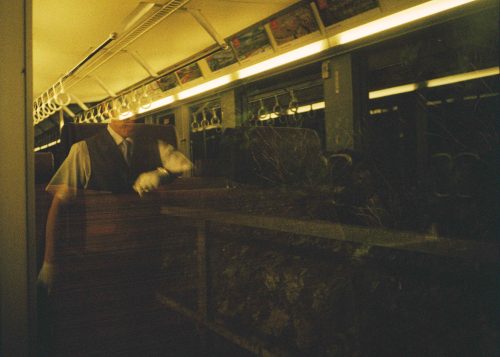
The scene was set at night during a long holiday weekend, and the train driver was photographed through the window as I boarded the train heading in the opposite direction from the people heading for the tourist attractions. The quiet sound of the shutter resonated pleasantly in the empty car, and looking out the window with a camera that fits in your hand gives you the feeling that you are on a journey together with your camera. I was able to take some good snapshots even in the middle of the night, and I was able to go back to my roots and genuinely enjoy photography.
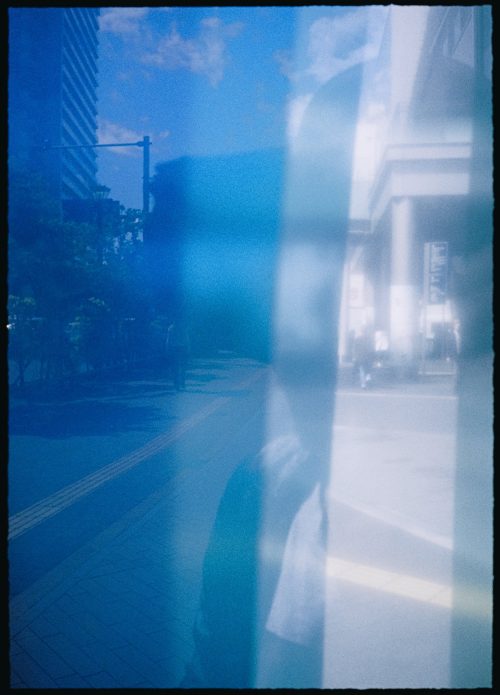
I captured photographs using various objects in the city. Even without filters, there are many things in the city that you can capture that will give you photographic results beyond what you can imagine with just a little ingenuity when shooting. This is one of the photos that made me feel that this was a camera that would help me come up with new ideas one after another, thanks to its lightweight compact design that makes me want to try out various things.
How did you like how the photos taken with the PENTAX 17 turned out?
They were very beautiful. The lenses that can adapt to a variety of situations and promise a nice, clean finish are also excellent.
ITTETSU MATSUOKA
松岡一哲
What were your first impressions of the PENTAX 17 and how did it feel to use?
I thought it was a camera made by people who truly love cameras from the bottom of their hearts. When I thought about what kind of pictures I wanted to take with the PENTAX 17, I decided that I wanted to take pictures of scenery, which is unusual for me. I found it a little difficult to adjust the focus, but when set to fully auto, it was easy to use even for the first time.
Please tell us about the photos you took with the PENTAX 17.

This is a photo of a lake in Frankfurt, Germany, that I shot while on a business trip. I liked the unique atmosphere of the overcast weather and the beauty of the tones. Out of the many shots I took along the way, this is one of my favorites. When shooting with the PENTAX 17, the operation itself was the same as usual, but I had a stronger sense of “seeing the whole picture calmly” than usual.
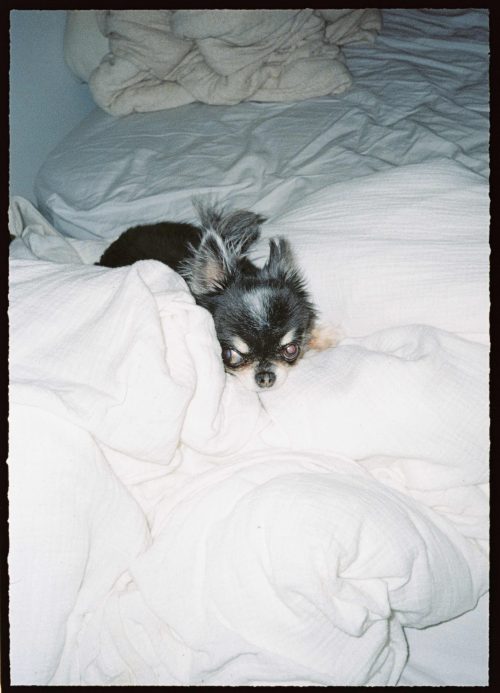
This is my dog Tama, who will turn 13 soon. He is a very important family member. He becomes more beautiful and adorable day by day.
How did you like how the photos taken with the PENTAX 17 turned out?
I thought they turned out very nicely, with a good balance of coarseness and sharpness. The PENTAX 17 is packed with the joy of taking pictures, yet it can also be taken with just one’s feel. It was as if I was having fun with two cameras.
MASUMI ISHIDA
石田真澄
What were your first impressions of the PENTAX 17 and how did it feel to use?
It’s very light and compact. Film cameras are often small but heavy, but this one was very light and appeared to be easy to use. Since it is a half-frame camera, you don’t have to worry about the number of shots you can take, and it looks just right for carrying around easily and taking photos in your everyday life, as well as for taking with you on trips. It was easy to start shooting, and I was able to take pictures just as I normally would. The “zone focus ring” has a picture on it that matches the purpose of the shot, so the focal length is easy to understand and can be freely selected. I thought it was a film camera that was not only sensible to use, but one that even beginners could feel comfortable with.
Please tell us about the photos you took with the PENTAX 17.
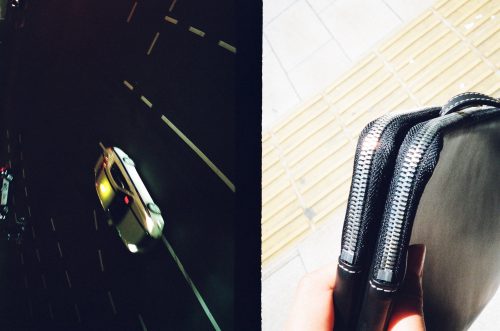
This is a photo of the scenery from the pedestrian bridge at night and the zipper part of the bag I was carrying, which I found shining in the sunlight. I found the contrast of light between night and day to be excellent, and the vertical lines of both lines were equally impressive.
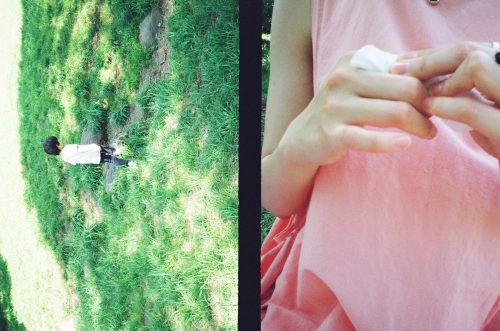
I took this shot of a child walking while enjoying a picnic in the park and a friend who injured her hand during the picnic. I thought the contrast of green and pink and the blurring of the hand were beautiful.
How did you like how the photos taken with the PENTAX 17 turned out?
The images were sharp and the camera was able to capture them well in the dark.
TAKAO IWASAWA
岩澤高雄
What were your first impressions of the PENTAX 17 and how did it feel to use?
I was impressed by the different parts of the camera with the number “17” included, as well as the attention to detail in its appearance and functionality. I think it fits well in your hand and you can carry it around while shooting. Because you can take a number of pictures with the half-frame camera, it would be fun to take a lot of pictures while hanging out with your friends. When shooting, I often made use of the strap that came with the camera to measure the distance. I was impressed to learn that the length of the strap extended from the camera was exactly the distance required for macro photography, and that it was also a length that had been intentionally crafted.
— Please tell us about the photos you took with the PENTAX 17.

This is a picture I took of actor Haruka Imou at a family restaurant. It’s a self-homage to Imou’s photo book “Hajimete no Butai” (“First Stage”), which I shot six years ago. I wanted people to enjoy the passage of time.
With the PENTAX 17, I photographed many of the same situations, so I had more chances to capture good expressions and good light.
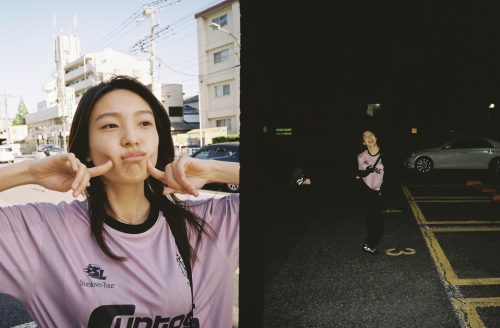
This is a snapshot taken on my way home from a family restaurant.
How did you like how the photos taken with the PENTAX 17 turned out?
They turned out great. There was a softness to it, but I also liked the sharpness of the edges, which, if you didn’t tell me was shot with a half-framed camera, I would have assumed it was shot with a 35 mm lens.
INFORMATION OF PENTAX
The PENTAX 17 is currently on sale. For details, please visit the Ricoh Imaging website and the official e-commerce website (order status and other details are subject to change). In addition, a video introducing the PENTAX “Film Camera Project,” and a website featuring articles from BARFOUT! are also available now.
【WEB SITE】
Product features of the PENTAX 17
www.ricoh-imaging.co.jp/english/products/pentax17/feature
About the Film Camera Project
www.ricoh-imaging.co.jp/english/pentax/filmproject
【Instagram】
@pentax.jp
@pentax.film.photography
【X】
@ricohimaging_jp
INFORMATION OF KEISUKE NAGOSHI
Nagoshi plans to publish his photographs of the Sahara Desert in 2024, having spent time with the Tuareg people.
【WEB SITE】
www.keisukenagoshi.com
【Instagram】
@keisuke_nagoshi
INFORMATION OF ITTETSU MATSUOKA
Matsuoka plans to release three collections of photographs taken by himself during the second half of 2024, saying with enthusiasm, “I want to make all of them into books that are carefully oriented.” Check his official website “ittetsumatsuoka.com” and his social media for further updates.
【WEB SITE】
ittetsumatsuoka.com
【Instagram】
@ittetsumatsuoka
INFORMATION OF MASUMI ISHIDA
Ishida’s works are part of “Lake Side Specific! Summer Vacation Museum Observations” held at the Ichihara Lakeside Museum. For more information, please visit lsm-ichihara.jp/exhibition/lakesidespecific.
【WEB SITE】
masumiishida.com
【Instagram】
@8msmsm8
INFORMATION OF TAKAO IWASAWA
“15 PHOTOGRAPHERS EXHIBITION SEASON 2 [TEMPERATURE]”, a photography exhibition featuring the works of 15 photographers, is currently being held at “AL Gallery” until July 21. An exhibition of Iwasawa’s works, “Sa, Sayonara” is scheduled to be held at NA.N.DE from the end of July to August (end date undetermined).
【WEB SITE】
www.thevoice.jp/takao-iwasawa
【Instagram】
@takaoiwasawa




